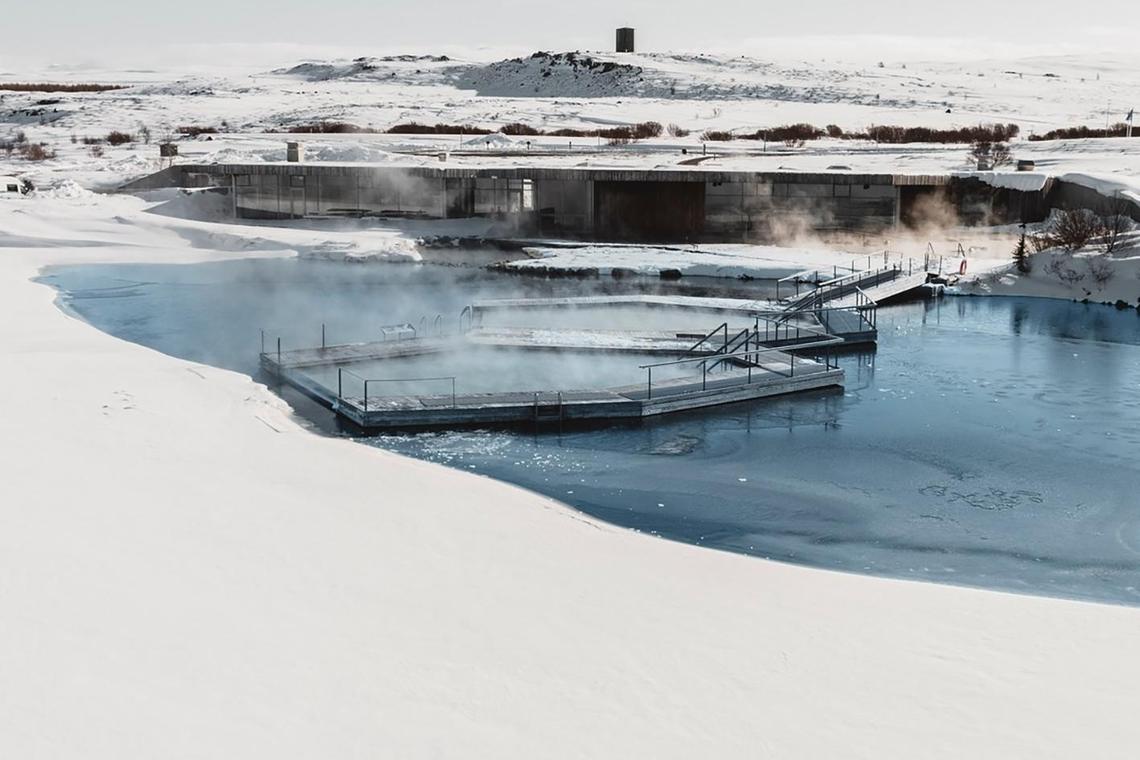REYKJAVIK – Iceland’s most famous thermal hot spring is undoubtedly Blue Lagoon, known for its milky blue waters. But Iceland’s bathing culture goes beyond this hot spot, with more than 100 hot springs and heated pools dotted around the country.
Icelanders have been soaking in hot springs for almost 1,000 years – and they are still at it today.
Even the tiniest towns have a sundlaug (swimming pool in Icelandic) with all the works: hot tubs, cold plunges, saunas and waterslides, at entry fees as low as 1,000 Icelandic krona (S$10.46).
In fact, Iceland’s bathing culture has been nominated for Unesco’s list of Intangible Cultural Heritage, which, if successful, is set to be awarded in December.
While Icelanders have their favourite watering holes, there are also dedicated facilities which attract travellers keen to experience outdoor bathing.
The best known of these is the Blue Lagoon, which became famed for its therapeutic waters in the 1980s. Located 45 minutes by car from Reykjavik city centre, it attracts over a million visitors a year.
onsen in Japan
, you will find the pre-bath routine familiar: Scrub down until you are squeaky clean before even thinking about dipping your toes in the water.
But, unlike onsens, swimsuits are a must – no naked lounging here – as the pools are not segregated by gender.
When I casually ask if I can go without a bathing suit, I am greeted with an aghast “no, no, no” from an Icelander. However, they are not shy about nudity in the shower and dressing areas.
The rules regarding food and drink are a little less strict. While food is not allowed, you can enjoy a cold beverage, including beer and cocktails, while you luxuriate in the warm water. Cold drinking water is free for when you feel dehydrated.
You can refuel with soup, sandwiches and snacks at the end, after you get dressed and exit the pools.
The greatest pleasure of the Icelandic bath experience is the delicious contrast between hot and cold, especially if you brave the sub-zero winter. Imagine gazing out on an all-white landscape, your body submerged in balmy waters while snowflakes land on your face.
Steam rooms and saunas further heat up the body, while cold mist rooms and icy plunge pools provide an invigorating shock to the system. I am too chicken to dip more than a toe into the cold pools, but I witness brave souls taking the plunge and emerging looking almost victorious.
Taking a selfie of your blissed-out face is also not frowned upon. In fact, you will spot many bathers with their phones in rented waterproof casing, casually snapping photos of themselves half-naked against the gorgeous scenery.
Compared with onsen waters, which can go up to 42 deg C, Icelandic springs are a few degrees cooler – which means longer, more luxurious lounging.
As a huge fan of simmering myself until I turn into a prune, I take the chance while on a recent driving holiday around Iceland to soak my travel-weary bones at three very different baths – from the utilitarian to the luxurious.
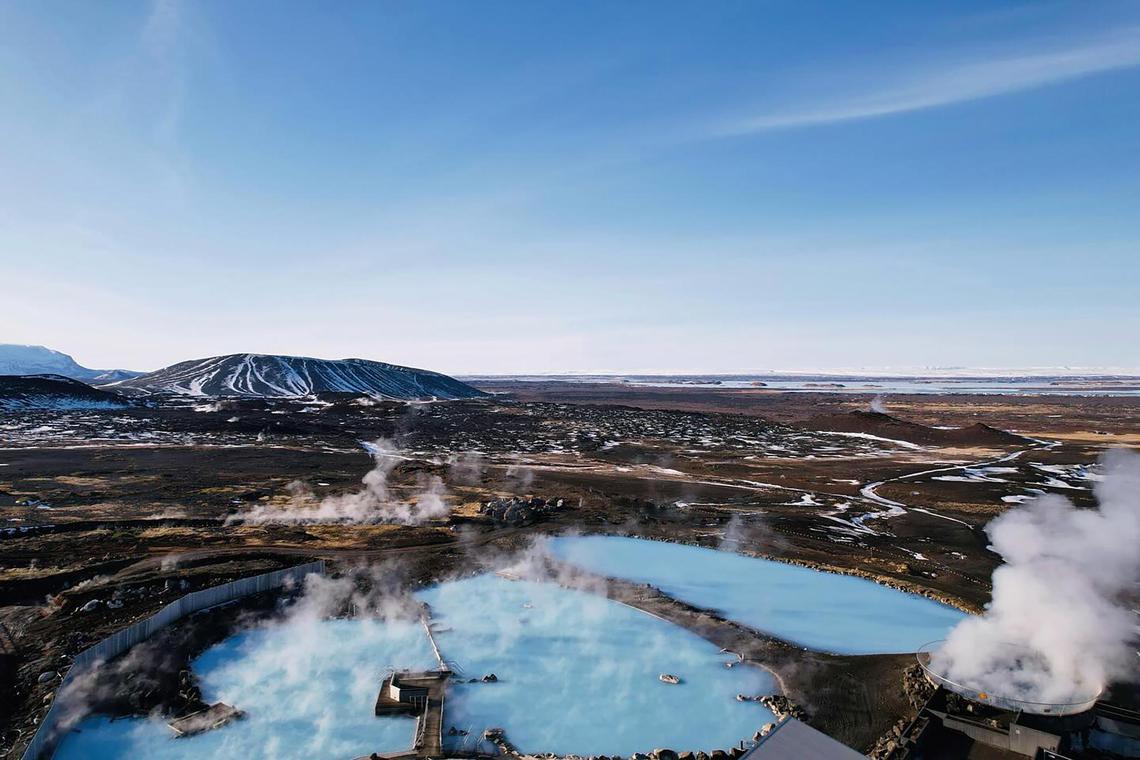
Myvatn Nature Baths is filled with mineral-rich geothermal water.
PHOTO: MYVATN NATURE BATHS/FACEBOOK
After hiking around a volcano for two hours, we pull up at Myvatn Nature Baths (7,400 Icelandic krona for one adult;
myvatnnaturebaths.is
) in the north with sore calves and zero expectations – and, after a good soak, float out in a state of bliss.
Surrounded by the stunning Lake Myvatn, this man-made lagoon is rich in minerals and boasts the same milky blue water as Blue Lagoon. It attracts far fewer tourists due to its remote location, though a busload of them were dropped off while we were there.
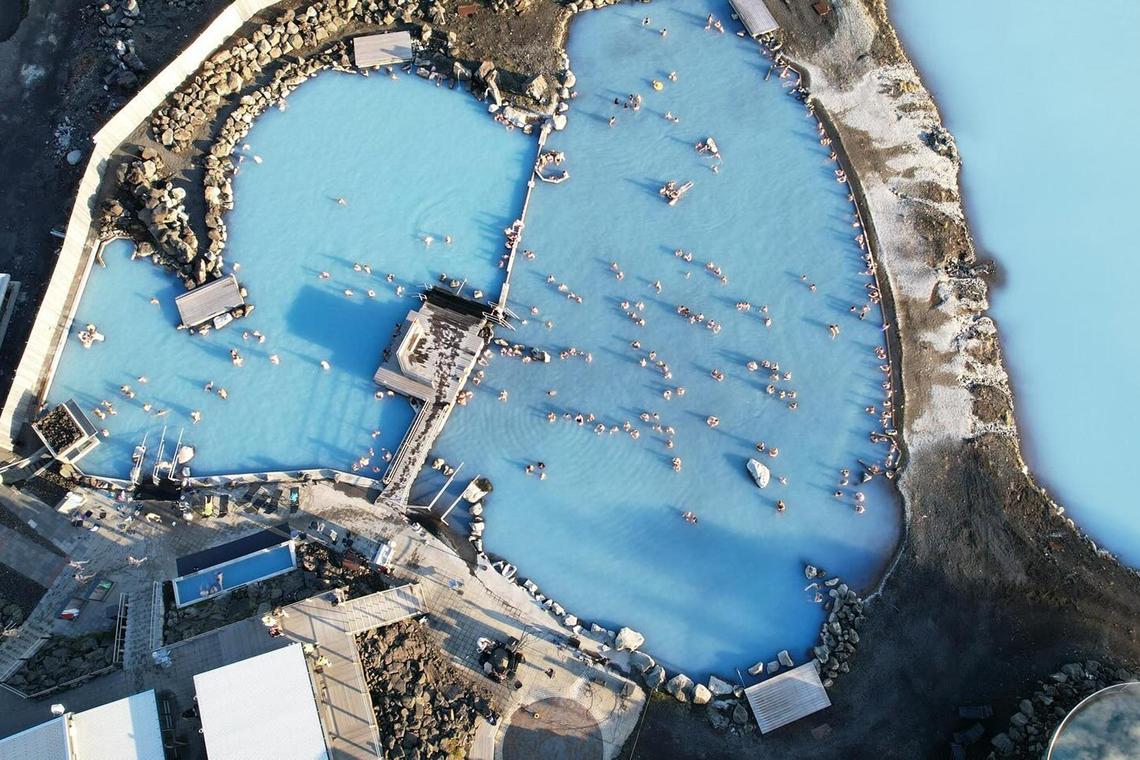
The water at Myvatn Nature Baths contains more sulphur than other thermal springs.
PHOTO: MYVATN NATURE BATHS/FACEBOOK
There is the characteristic stink of rotten eggs in the air, as the water here contains more sulphur than other thermal springs. The mineral is said to be beneficial for skin, due to its anti-bacterial, anti-inflammatory and exfoliating properties.
This is the only place where we are advised to remove jewellery, which may turn black due to a chemical reaction with the water.
Though the utilitarian facilities are a little tired – a new building is due to be ready in 2026 – the steamy spring is exactly what we need to rejuvenate us. We drink in the peaceful views over the lake, as well as a well-deserved icy adult beverage.
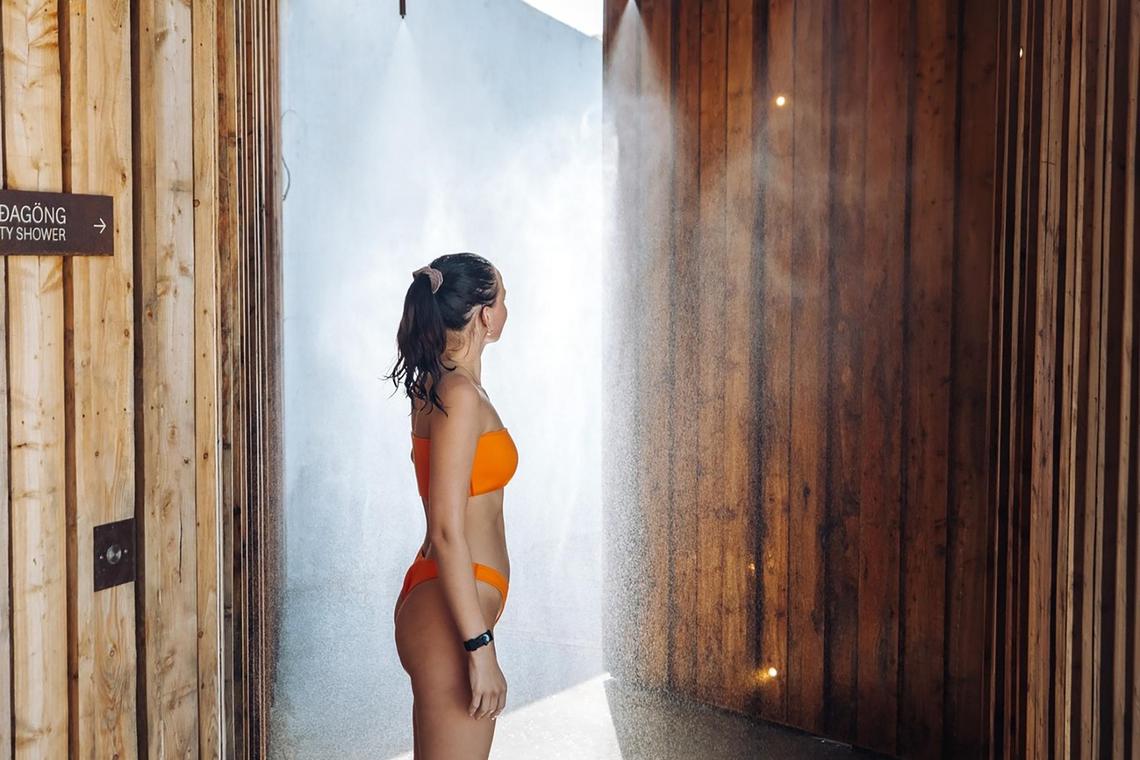
The Icelandic blend of nature and modernity is seen in the interiors of Vok Baths, with warm wood, smooth concrete and geometric shapes.
PHOTO: VOK BATHS/FACEBOOK
The day before we arrive at Vok Baths (7,490 Icelandic krona for one adult;
vokbaths.is/en
) in the eastern part of Iceland, we just about wreck our knees on a four-hour hike up and down a glacier. A steaming hot bath is the perfect remedy.
From the outside, all that can be seen is a grass-covered roof which merges seamlessly into the landscape, and discreet glass doors which lead to the lobby. This Icelandic blend of nature and modernity is seen in the interiors as well, with warm wood, smooth concrete and geometric shapes being a large part of the minimalist design.
Wood planks surround its three floating pools of varying temperatures up to 41 deg C, where bathers – both local and tourist – mingle while taking in the panoramic views over Lake Urrioavatn, arguably even more stunning than Lake Myvatn.
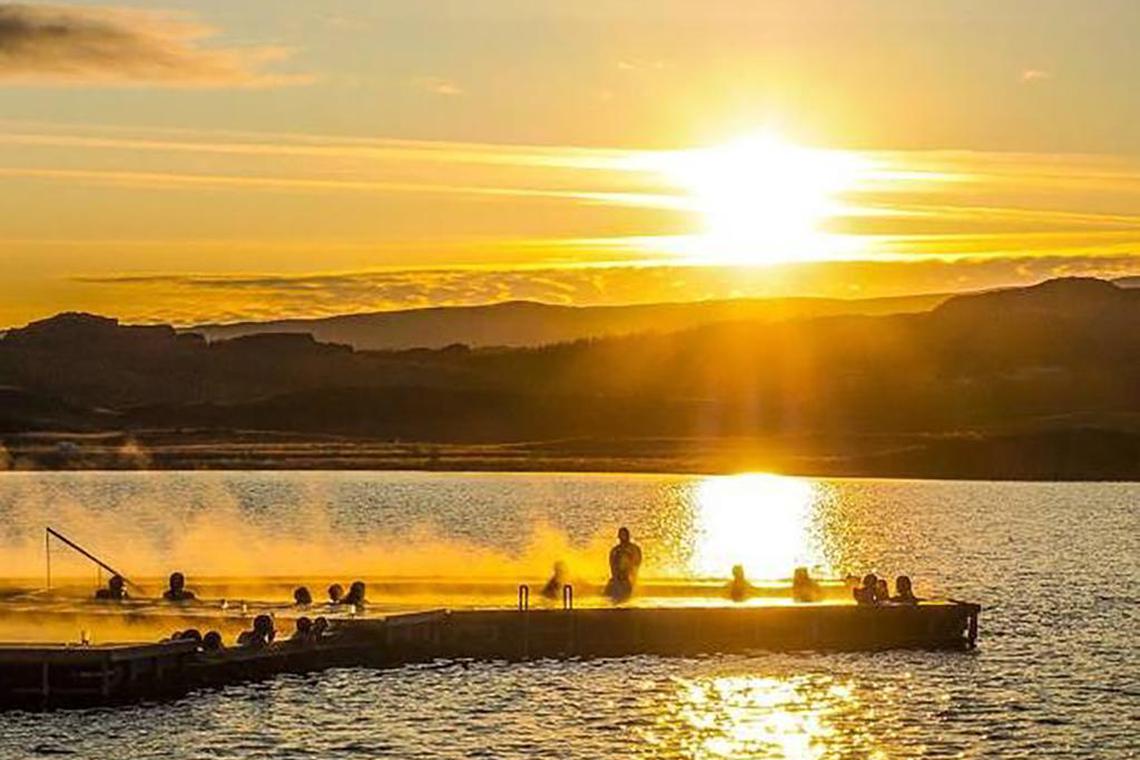
Vok Baths has three floating pools, where bathers mingle while taking in the panoramic views.
PHOTO: VOK BATHS/FACEBOOK
When it gets too hot, we nip into the rain mist tunnel, where it is a refreshing 10 deg C. But I draw the line at submerging my entire body in the lake, where the water temperature goes down from 18 deg C in summer to 0 deg C in winter.
Possibly the most luxe hot spring – with an admission price to match – Sky Lagoon (from 15,990 Icelandic krona for one adult;
skylagoon.com
) is also the most accessible from capital Reykjavik, just 10 minutes away by car, making it the most tourist-friendly of the three hot springs we visit.
Seemingly carved out of rugged black rocks, the man-made pool is sleek yet simple, once again embodying the Icelandic design ethos that embraces nature.
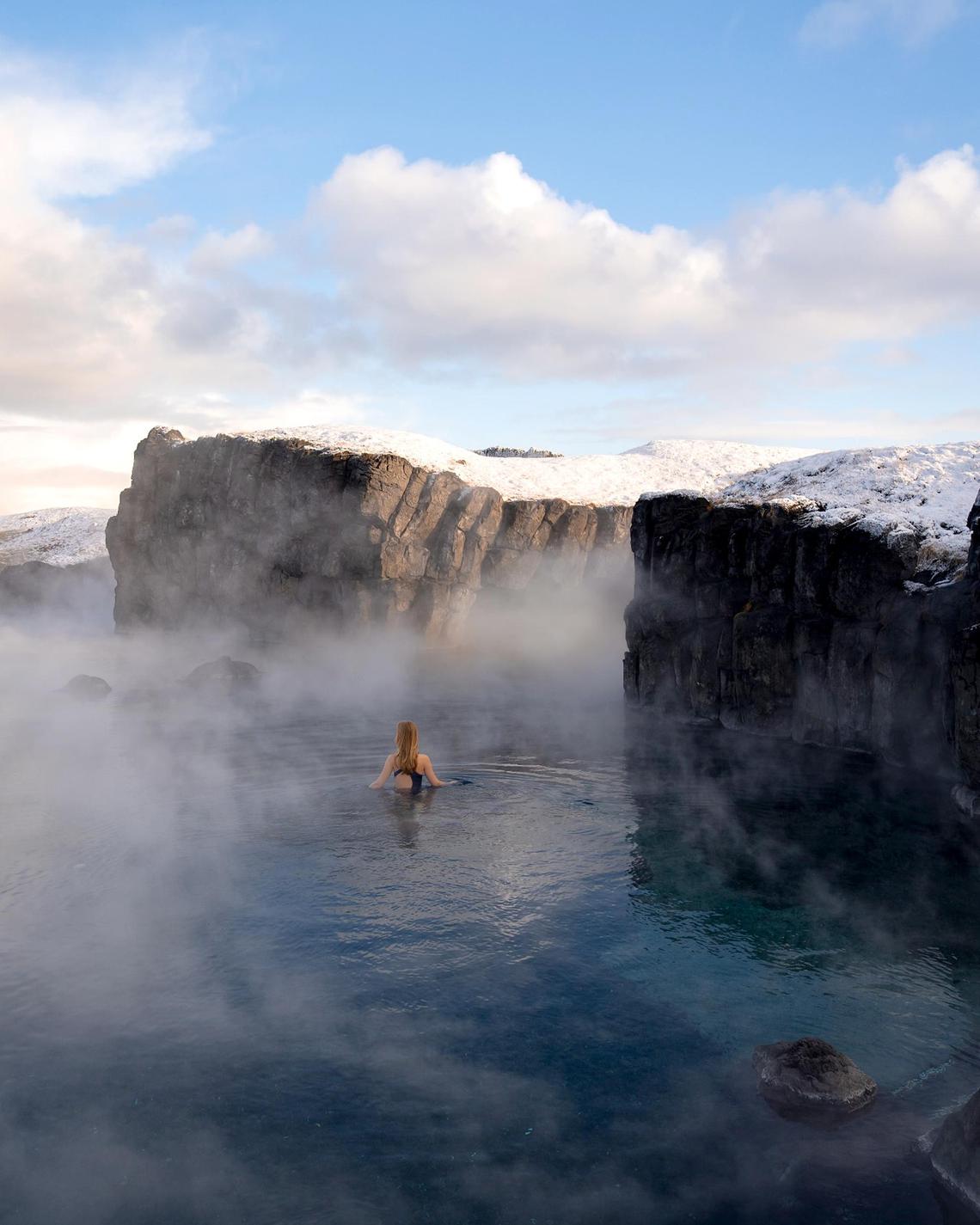
Seemingly carved out of rugged black rocks, Sky Lagoon boasts stunning sauna facilities and a rain mist room.
PHOTO: SKY LAGOON ICELAND/FACEBOOK
Do not skip the meditative seven-step ritual, which starts with soaking in the natural warmth of the geothermal water, followed by an invigorating cold plunge into a 5 deg C pool.
Next is the most impressive sauna I have ever sizzled in, with a huge pane of floor-to-ceiling glass facing the water.
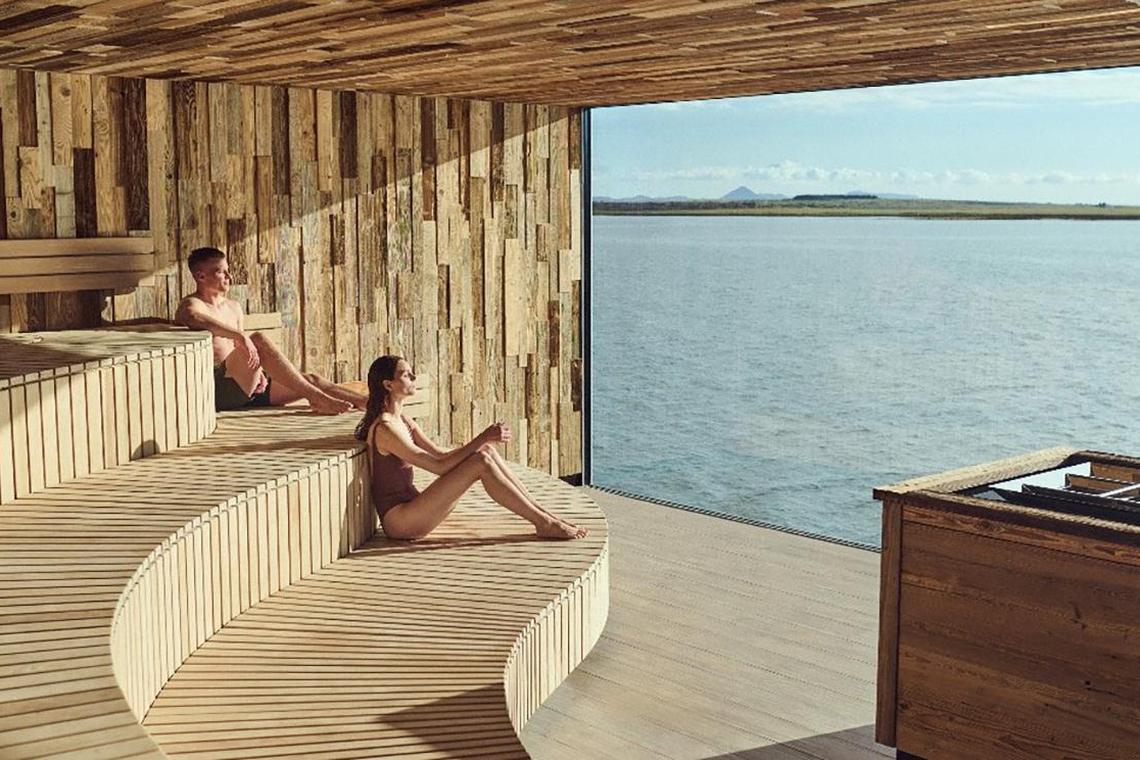
Sky Lagoon’s sauna has a huge pane of floor-to-ceiling glass facing the water.
PHOTO: SKY LAGOON ICELAND/FACEBOOK
On a good day, you can admire the cone-shaped Keilir mountain, a 700,000-year-old glacier and even the Northern Lights, while the heat opens every pore on the body.
Cool down after that with the minus 5 deg C rain mist – an almost religious experience, with sleek bodies standing silently under the fine drizzle, faces turned to the sky.
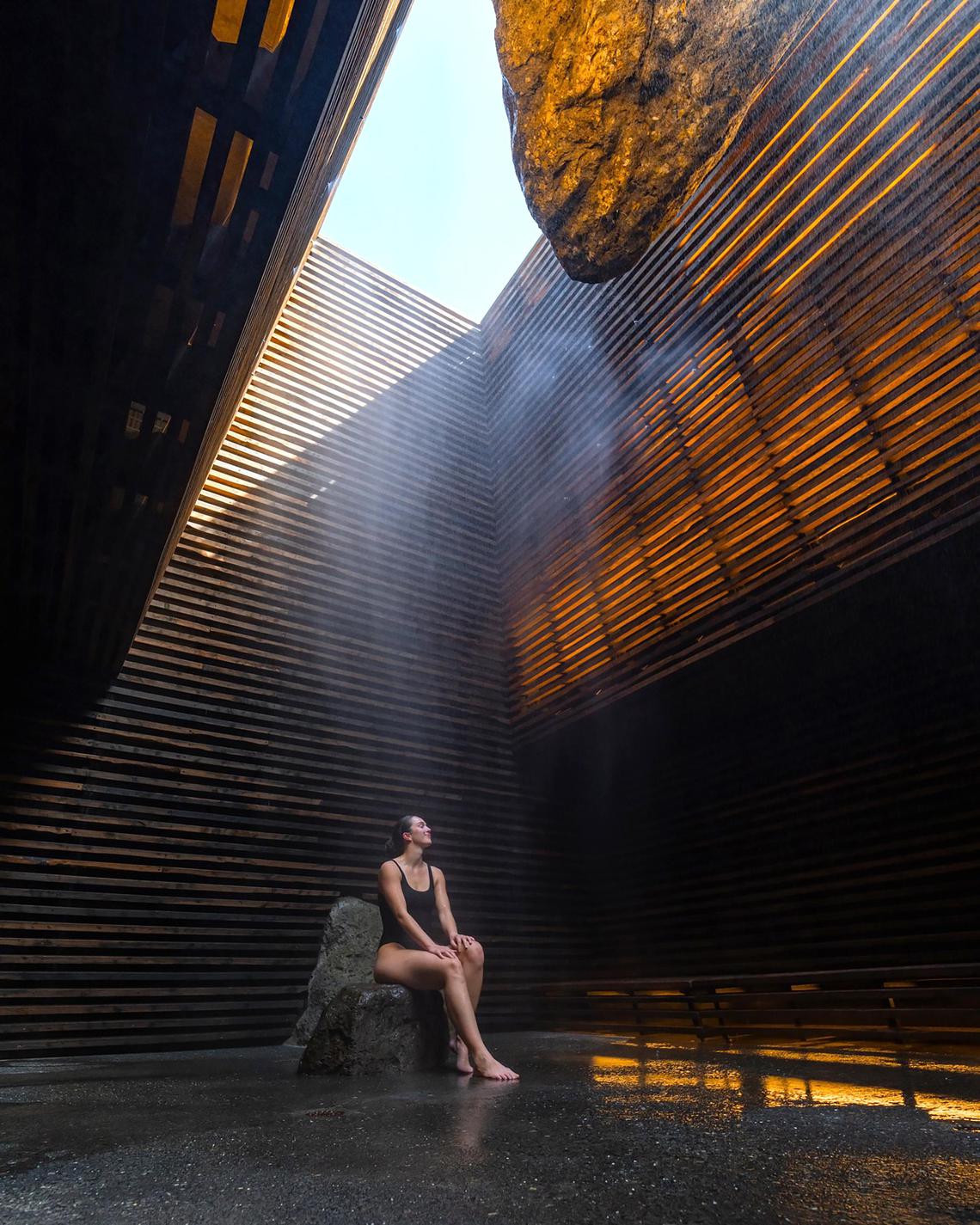
After a sauna session at Sky Lagoon, guests can cool down with a minus 5 deg C rain mist.
PHOTO: SKY LAGOON ICELAND/FACEBOOK
Following that, I slough off a layer of dead skin with a salt scrub before entering the dark, womb-like steam room to once again embrace the heat.
The final step is a shot of an Icelandic elixir, made with tart crowberries from the lava fields.
I emerge from this sanctuary relaxed and radiant. And the lingering sniffles I have been nursing for days are miraculously gone.
Global Design is a series that explores design ideas and experiences beyond Singapore.
Suzanne Sng is a writer, editor and hot spring aficionado who has been based in Amsterdam for the past five years.
